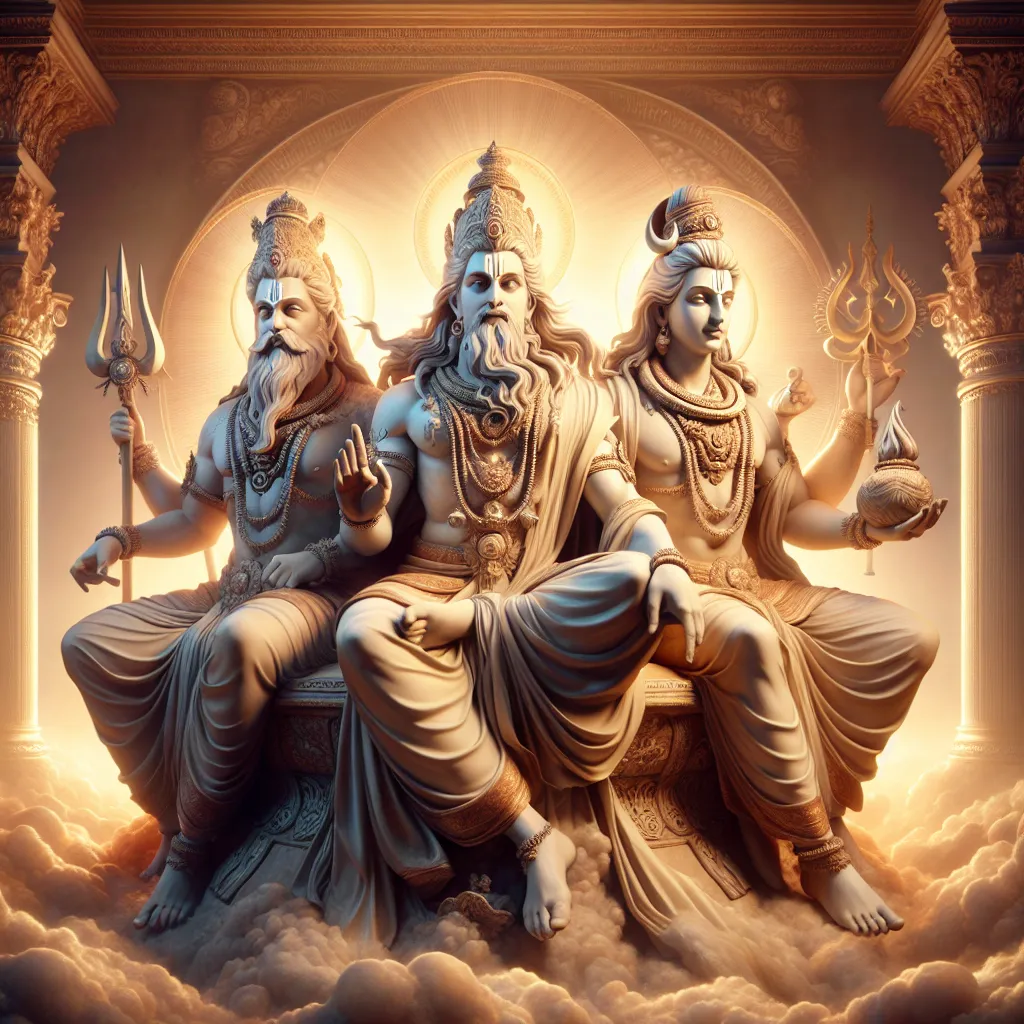
- Published on
- Authors

- Name
- You
The Trimurti: Brahma, Vishnu, and Shiva - The Divine Trinity
Hinduism, one of the oldest religions in the world, encompasses a complex and varied pantheon of deities. Central to its theological structure is the concept of the Trimurti, or the divine trinity, which represents the cosmic functions of creation, preservation, and destruction. These functions are personified by Brahma the Creator, Vishnu the Preserver, and Shiva the Destroyer.
Understanding the Trimurti
The Trimurti is not just a personification of cosmic principles but an embodiment of metaphysical concepts that interweave the fabric of the universe. To comprehend their roles, let's delve into each deity's significance and contribution.
| Deity | Role | Symbolic Meaning |
|---|---|---|
| Brahma | The Creator | Intellectual and Creative Energy |
| Vishnu | The Preserver | Sustenance and Order |
| Shiva | The Destroyer | Transformation and Renewal |
Brahma: The Creator
Brahma, the first entity in the Trimurti, is the manifestation of creation. According to Hindu scriptures, Brahma emerged from the cosmic golden egg and began the process of creation, bringing forth the universe and all its beings.
- Symbolism: Brahma is often depicted with four heads, each reciting one of the four Vedas, symbolizing comprehensive knowledge and omniscience.
- Scientific Parallel: In contemporary scientific parlance, Brahma's role resembles the 'big bang' theory, the initial burst of energy that led to the creation of the universe.
Vishnu: The Preserver
Vishnu, the sustainer of life and protector of the universe, is tasked with maintaining cosmic order (Dharma). He incarnates in various forms, known as Avatars, to restore balance whenever it is disrupted.
- Symbolism: Vishnu is typically shown lying on the cosmic serpent Ananta (infinity), floating on the ocean of milk, representing endless possibilities.
- Scientific Parallel: Vishnu's preservation can be compared to the laws of thermodynamics, particularly the concept of entropy, where energy within the universe is preserved and transformed to maintain order.
Shiva: The Destroyer
Shiva, the destroyer or transformer, is often misunderstood as merely a harbinger of chaos. His role is essential as destruction is a precursor to renewal and regeneration.
- Symbolism: Shiva is depicted in a meditative posture or performing the cosmic dance, Tandava, which symbolizes the cyclic process of creation, preservation, and destruction.
- Scientific Parallel: Shiva’s transformative energy resonates with the concept of entropy in thermodynamic systems, leading to evolution through destruction and renewal.
The Interplay of the Trimurti
In the Hindu cosmological framework, the Trimurti represents the cyclical patterns of the universe. This cyclical nature can be seen in various natural phenomena such as the water cycle, the birth and death of stars, and the changing seasons. This eternal cycle of creation, preservation, and destruction underscores the dynamic equilibrium that sustains the cosmos.
Conclusion
By exploring the roles of Brahma, Vishnu, and Shiva through the lens of both mysticism and advanced scientific understanding, we gain a holistic view of the universe's functioning. The Trimurti is not just a theological construct but a profound metaphysical model that integrates the fabric of reality and the transcendental principles that govern it.
Whether seen as divine entities or metaphorical representations, the Trimurti's articulation of creation, preservation, and destruction provides a timeless template for understanding the universe and our place within it.
